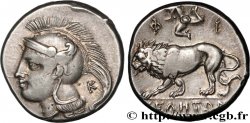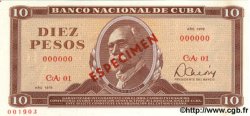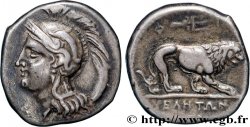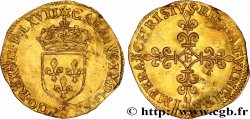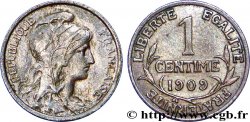bgr_1063374 - LUCANIA - VELIA Nomos, statère ou didrachme
800.00 €约 6552.00 CNY
数量
加入购物车

种类 Nomos, statère ou didrachme
日期: c. 305/304- 293/290 AC.
铸币厂名称/城市 Vélia, Lucanie
材质 silver
直径 20,5 mm
模子方针 1 h.
重量 7,34 g.
稀少度 R1
关于品相的说明
Bel exemplaire, centré des deux côtés. Joli revers, bien venu à la frappe. Très beau portrait d’Athéna. Patine grise de collection
出版目录中的项代码 :
家谱
Avec son étiquette ancienne (G. Morchio, numismate à Venise)
正面
正面的说明书 Tête d'Athéna à gauche, coiffée du casque attique à cimier avec triple aigrette, orné d’un hippocampe ailé ; javeline pointé en avant ; monogramme devant le nez.
正面铭文 F/ DE
背面
背面的说明书 Lion passant à droite ; trident tourné à droite, au-dessus.
背面铭文 UELHTWN/ F-I
背面的翻译 (de Vélia).
评论
Exemplaire signé sur le couvre nuque du casque. Mêmes coins que l’exemplaire de la collection Mc Lean (Cambridge, n° 1466) et que celui de l’Hunterian Coin Cabinet de Glasgow, n° 45. Très tôt, le monnayage de Vélia a été décrit comme ayant inspiré la drachme lourde de Marseille (LT. 785-791). Certains l’ont même décrit comme un monnayage symmachique : un lion de Vélia étant l’équivalent de deux lions de Marseille. Aujourd’hui, cette théorie est remise en cause, par G. Depeyrot, non sans arguments, mais avec une certaine acrimonie. Le lion de Vélia a pu servir de modèle à celui de Marseille, mais à quelle date ? La frappe à Vélia commence dans la seconde moitié du Ve siècle avant J.-C. pour se poursuivre jusqu’en 281 avant J.-C. À quel moment les Massaliotes auraient-ils emprunté le lion de Vélia ?.
example signed on the nape of the helmet. Same dies as the example in the McLean Collection (Cambridge, no. 1466) and that of the Hunterian Coin Cabinet in Glasgow, no. 45. Very early on, the coinage of Velia was described as having inspired the heavy drachma of Marseille (LT. 785-791). Some have even described it as a symmachic coinage: one lion of Velia being the equivalent of two lions of Marseille. Today, this theory is challenged, not without argument, but with a certain acrimony, by G. Depeyrot. The lion of Velia could have served as a model for that of Marseille, but at what date? Minting at Velia began in the second half of the 5th century BC and continued until 281 BC. At what point might the Massaliotes have borrowed the lion of Velia?
example signed on the nape of the helmet. Same dies as the example in the McLean Collection (Cambridge, no. 1466) and that of the Hunterian Coin Cabinet in Glasgow, no. 45. Very early on, the coinage of Velia was described as having inspired the heavy drachma of Marseille (LT. 785-791). Some have even described it as a symmachic coinage: one lion of Velia being the equivalent of two lions of Marseille. Today, this theory is challenged, not without argument, but with a certain acrimony, by G. Depeyrot. The lion of Velia could have served as a model for that of Marseille, but at what date? Minting at Velia began in the second half of the 5th century BC and continued until 281 BC. At what point might the Massaliotes have borrowed the lion of Velia?








 对产品描述纠错
对产品描述纠错 打印
打印 分享我的选择
分享我的选择 提问
提问 Consign / sell
Consign / sell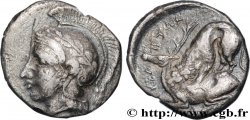
 产品介绍
产品介绍